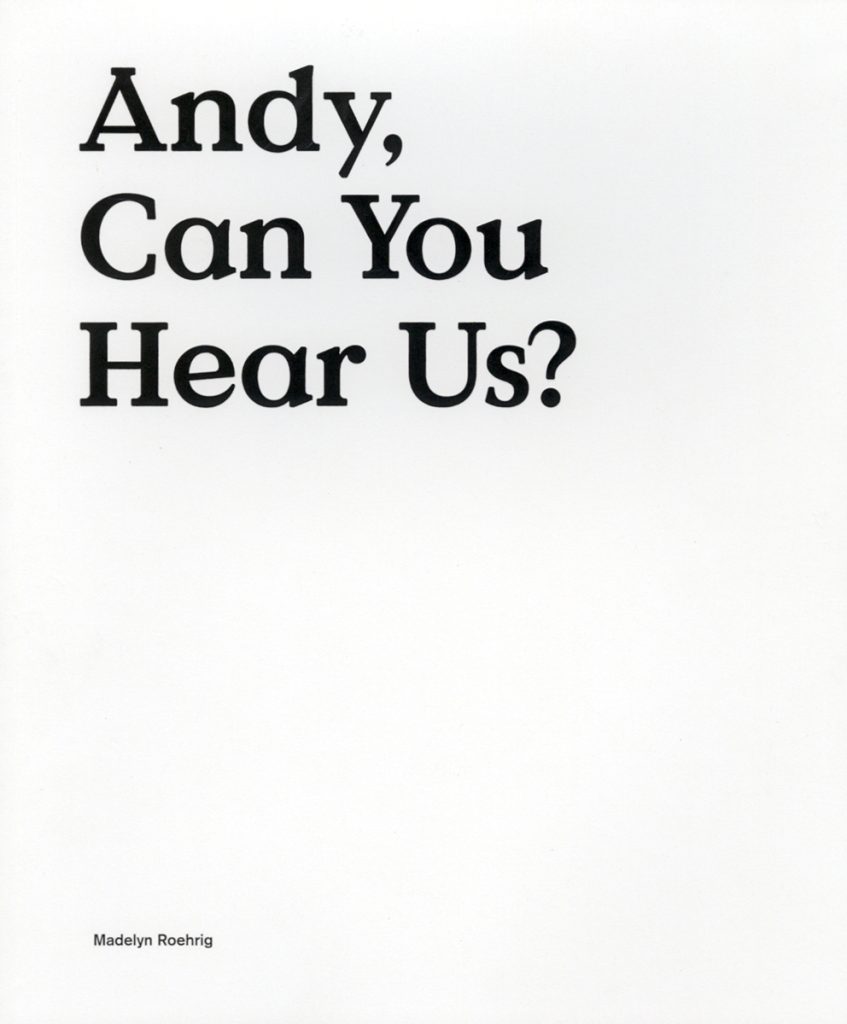 Andy, Can You Hear Us? Communing with Andy Warhol at His Gravesite – Vol. 1 (Winter)
Andy, Can You Hear Us? Communing with Andy Warhol at His Gravesite – Vol. 1 (Winter)
By Madelyn Roehrig
Andy’s Figments, 2020
80 pages, color photos
Softcover, $39.99
Reviewed by Eric Lidji, Director, Rauh Jewish History Program & Archives, Heinz History Center
The novelist Cynthia Ozick once made a distinction between travelers and pilgrims. A traveler passes through a place. A place passes through a pilgrim.
Andy Warhol’s grave in Bethel Park attracts both types in large numbers. People come from across the street and around the world to visit his resting place at St. John the Baptist Byzantine Catholic Cemetery. They come to be seen and to be moved. They bring gifts and leave messages—some goofy or clever, some dismissive, some sincere and personal. The diverse responses are fitting for an artist who insisted he was “deeply superficial” and whose devotees divide evenly between the halves of that oxymoron.
Madelyn Roehrig is a pilgrim, only more so. For more than a decade, the artist has been documenting Warhol’s grave through her “Figments” project. Roehrig once lived near the cemetery and took to visiting Warhol’s grave over the years to meditate on artistic challenges. After an epiphany she describes in near-prophetic terms, she felt called to make art from the grave itself. She photographed it daily from the same spot and soon discovered signs of other visitors—most notably cans of Campbell’s soup left atop the grave, like the tiny stones founds in Jewish cemeteries. Curious, she left index cards and a Sharpie and asked visitors to write a note to Andy. To date, more than 1,600 have.
Andy, Can You Hear Us? is the first printed catalog of Roehrig’s project. It is archival in nature, favoring description over interpretation. It presents the culture of Warhol’s grave using photographs and stories, studio reproductions (by photographer Tom Little) of gifts and notes left there, and lists that quantify the scope of these visitations. Analysis is pushed to a pair of bookending essays, one by former Andy Warhol Museum Director Eric Shriner and the other by Robert Bailey, an associate professor of art history at the University of Oklahoma. With its focus on the ephemera of fandom, the book is a nice accompaniment to “A is for Archive,” the posthumous volume by Matt Wribican, beloved archivist of the Andy Warhol Museum.
The book documents the grave in winter. We see the gift-givers who come each Christmas and the respect-payers who come each February 22 to mark the anniversary of Warhol’s death. We see Warhol’s marker buried during the Snowmageddon storm of February 2010. We learn about a constellation of related projects and happenings: short films, a song, a 24/7 webcam, the 1,345 “celebrity postcards” sent to Andy by artist Paul LeRoy. What emerges is an inverted portrait of Andy Warhol, told not through his ideas and accomplishments but instead through the collective impression he made on people all over the world. By recording this phenomenon, Roehrig makes a more democratic and a more compelling case for Warhol’s influence than Regarding Warhol: Sixty Artists, Fifty Years, the massive 2013 exhibition about his impact within the art world.
Roehrig envisions this volume as the first of four, each documenting a different season at Warhol’s grave. I hope she succeeds and eventually compiles the entire project in one thick volume. Through her passion, Warhol’s grave has become a local treasure, another testament to the high-low quirkiness of Western Pennsylvania. It deserves to be documented comprehensively, and her dedication has created an opportunity to do so.